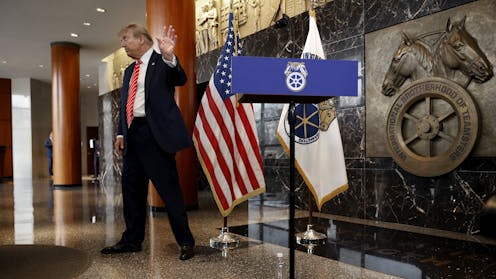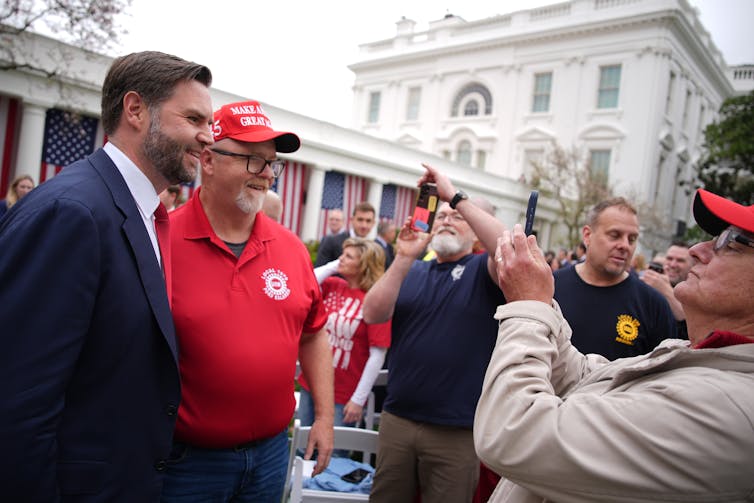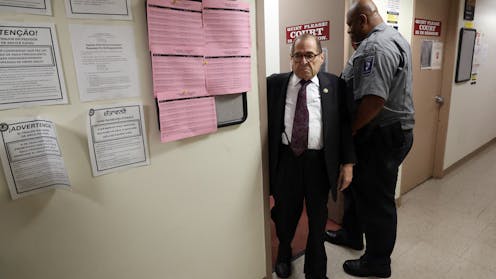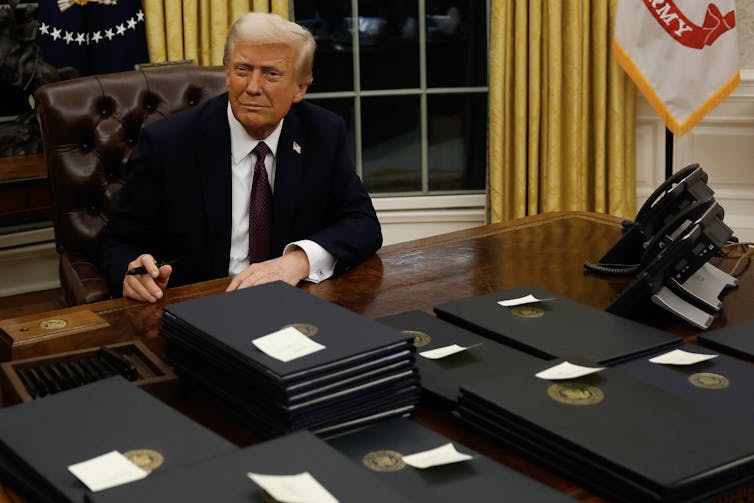Source: The Conversation – USA (3) – By David Higgins, Assistant Professor of Pediatrics, University of Colorado Anschutz Medical Campus

For 30 years, vaccine recommendations from the Centers for Disease Control and Prevention have aligned closely with those from the American Academy of Pediatrics, or AAP. But on Aug. 19, 2025, the AAP published new vaccine recommendations that diverge from those of the CDC.
The pediatrician association’s move comes on the heels of unprecedented changes made earlier this year by Robert F. Kennedy Jr., as head of the Department of Health and Human Services, in how the government approves and issues guidance on vaccines.
The biggest difference is in the AAP’s guidance around COVID-19 vaccines for children. This new guidance comes as COVID-19 cases are once again rising across the U.S. and many parents and providers are confused by unclear guidance from federal health authorities about whether children should be vaccinated.
In a Q&A with The Conversation U.S., David Higgins, a pediatrician, preventive medicine physician and vaccine delivery researcher from the University of Colorado Anschutz Medical Campus, explains the new guidance and what it means for parents. Higgins is also a member of the American Academy of Pediatrics.
What are the AAP’s new vaccine recommendations?
The AAP recommends that all children 6 to 23 months old receive a complete COVID-19 vaccine series, consistent with recommendations for this age group in previous years.
For children and adolescents ages 2 to 18, the AAP now advises a single dose if they are at higher risk, a change from previous years, when vaccination was recommended for all in this age group. Children at higher risk include those who have certain chronic medical conditions, who live in long-term care or group settings, who have never been vaccinated, or who live with family members at high risk.
The AAP also recommends that COVID-19 vaccines remain available for any child or adolescent whose parent wants them to be protected, regardless of risk status. In all cases, the most updated version of the vaccine should be used.
How do these recommendations differ from CDC guidance?
The difference is substantial. The CDC currently advises what it calls “shared clinical decision-making” for children ages 6 months to 17 years who are not moderately or severely immunocompromised. This means the decision is left up to individual discussions between families and their health care providers, but the vaccine is not treated as a routine recommendation. These current guidelines were made after Kennedy bypassed the agency’s normal independent review process.
That framework can be confusing for families and difficult for providers to implement. By contrast, the AAP recommendations identify the ages and conditions where the risk is highest while also supporting vaccine availability for any families who want it.

Pancake Pictures/Connect Images via Getty Images
Why are they diverging?
The AAP has been publishing vaccine guidance since the 1930s, long before the CDC or the Advisory Committee on Immunization Practices, an independent panel of experts that advises the CDC, existed.
Since 1995, the two groups have generally issued essentially identical vaccine guidance. But this year, the federal government dismissed the advisory committee’s panel of independent scientists and immunization experts, raising questions about the credibility of CDC guidance. At the same time, misinformation about vaccines continues to spread.
In response, the AAP decided to publish independent recommendations based on its own review of the latest evidence. That review showed that although the risks for healthy older children have declined compared with the early years of the pandemic, young children and those with specific conditions remain especially vulnerable. Additionally, a review of evidence by an independent expert group called the Vaccine Integrity Project, also released on Aug. 19, 2025, confirmed that there are no new safety concerns and no decline in the effectiveness of COVID-19 vaccines.
COVID-19 continues to cause hospitalizations and deaths in children and remains a leading cause of serious respiratory illness.
Will parents be able to follow these recommendations?
This is still unclear. The AAP recommendations do not automatically guarantee insurance coverage.
By law, insurance plans and the federal Vaccines for Children program, which provides vaccines for eligible children who might not otherwise be vaccinated due to cost or lack of insurance, are tied to Advisory Committee on Immunization Practices recommendations. Unless insurers and policymakers act to align with the AAP recommendations, there is a risk that parents would be forced to pay the costs out of pocket.
Vaccine supply may also be an issue. Currently, only two COVID-19 vaccines are available for children under 12. Moderna’s vaccine is approved only for children with at least one high-risk condition, while Pfizer’s authorization for younger children may not be renewed. If that happens, any remaining Pfizer doses for this age group may be unusable, leaving a shortfall in available vaccines for children.
Finally, implementation may differ depending on the type of provider. Some vaccine providers, such as pharmacists, operate under policies tied strictly to CDC recommendations, which may make it harder to follow AAP’s schedule unless rules are updated.
What happens next?
Parents and providers are likely to face continued confusion, just as COVID-19 cases rise as children return to school. Much will depend on whether the Advisory Committee on Immunization Practices updates its own recommendations at its upcoming meeting, expected in September, and whether pediatric COVID-19 vaccines remain available.
Until then, parents can speak with their pediatricians to understand the best protection for their children.
![]()
David Higgins volunteers as Vice President of the Colorado Chapter of the American Academy of Pediatrics and as a board member of Immunize Colorado. He was not involved in the development or publication of the American Academy of Pediatrics’ immunization guidelines. The views and opinions expressed in this article are solely his own and do not represent those of the American Academy of Pediatrics.
– ref. Pediatricians’ association recommends COVID-19 vaccines for toddlers and some older children, breaking with CDC guidance – https://theconversation.com/pediatricians-association-recommends-covid-19-vaccines-for-toddlers-and-some-older-children-breaking-with-cdc-guidance-263522





















